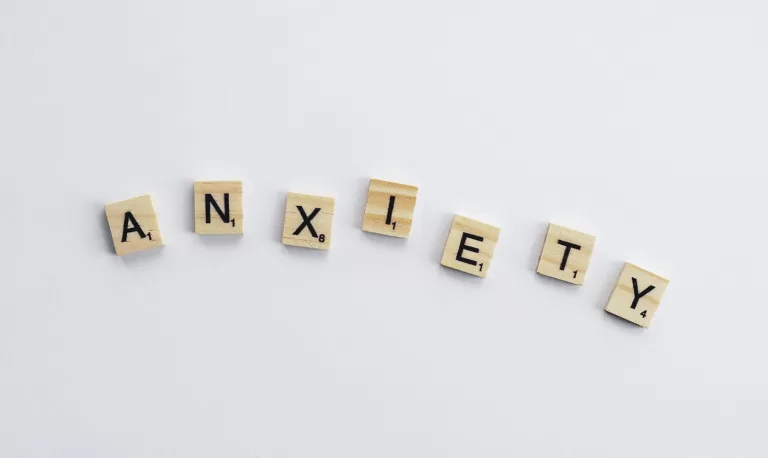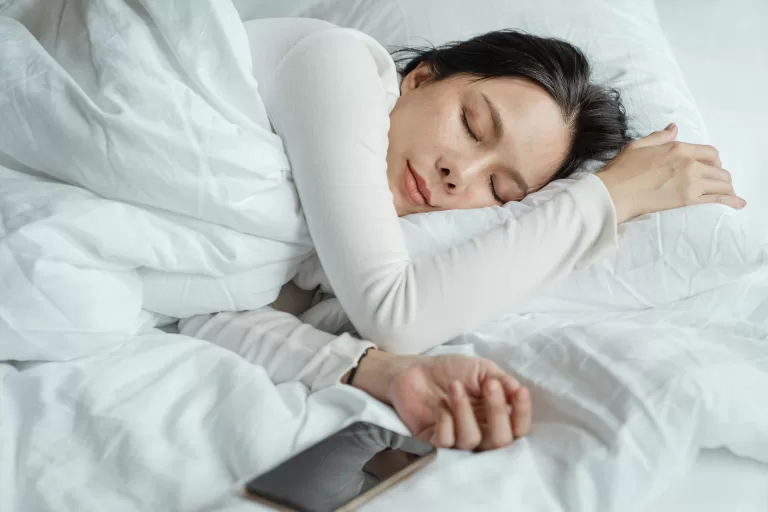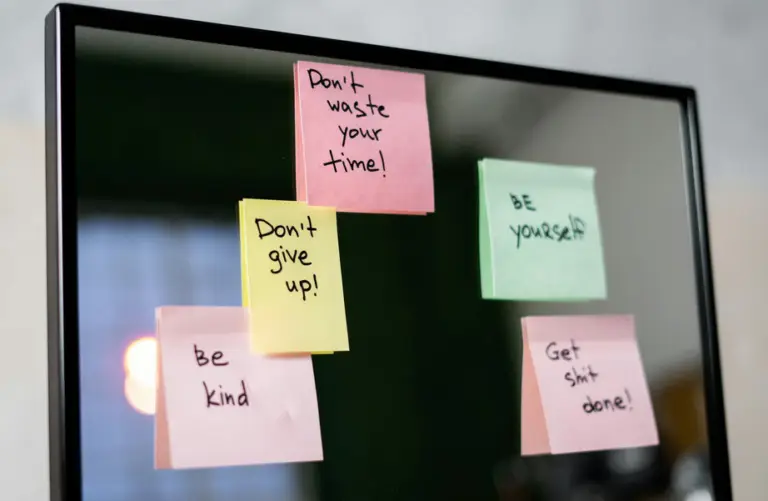Anxiety can feel overwhelming, making everyday life seem daunting. Whether you're feeling a racing heart, sweaty palms, or intrusive thoughts, it's important to know that practical strategies can help you calm anxiety. By understanding what anxiety is and employing techniques to manage it, you can regain control. Let’s explore seven effective ways to calm anxiety and bring peace back into your day.
What Is Anxiety?
Anxiety is a natural response to stress or danger, and understanding ways to calm anxiety is essential in managing it. It’s often described as a feeling of unease, worry, or fear. While it’s normal to feel anxious occasionally, excessive or persistent anxiety can interfere with daily life. Anxiety can manifest in various ways, including physical symptoms like a racing heart or mental symptoms such as constant worry.
Here are common types of anxiety you might experience:
- Generalized Anxiety: Persistent and excessive worry about various aspects of life, such as work or personal relationships.
- Panic Episodes: Sudden episodes of intense fear, often accompanied by physical symptoms like chest pain or shortness of breath.
- Social Anxiety: Intense fear of social situations and being judged or scrutinized by others.
- Specific Phobias: Extreme fear of a specific object or situation, such as flying or heights.
- Separation Anxiety: Fear of being separated from loved ones, often seen in children but can also affect adults.
- Obsessive Thoughts and Behaviors: Unwanted, intrusive thoughts and repetitive behaviors aimed at reducing anxiety.
- Post-Traumatic Stress: Anxiety triggered by a traumatic event, often involving flashbacks or nightmares.
Understanding what type of anxiety you may be experiencing can help you tailor coping mechanisms that work best for you. Now, let’s delve into seven ways to calm anxiety.
1. Breathe Deeply
When anxiety strikes, your breathing often becomes shallow and rapid, signaling your body’s fight-or-flight response. Deep breathing can help counteract this by signaling to your nervous system that it’s time to relax.
How to Practice 4-7-8 Breathing:
- Sit in a comfortable position.
- Inhale deeply through your nose for a count of 4, letting your stomach expand.
- Hold your breath for 7 counts.
- Exhale slowly through your mouth for 8 counts.
- Repeat the cycle at least 4 times.
Deep breathing not only reduces immediate feelings of anxiety but also improves oxygen flow, helping you feel more grounded and clear-headed.
2. Get Moving
Physical activity is one of the most effective ways to reduce anxiety. Exercise releases endorphins, your body’s natural mood elevators and reduces levels of cortisol, a stress hormone. You can read more about The Mental Health Benefits of Exercise on our website to explore the connection further.
Activities to Try:
- Go for a brisk walk or run.
- Try a yoga session to combine movement with mindfulness.
- Dance to your favorite upbeat music.
Even a 10-minute workout can make a significant difference in alleviating anxiety symptoms by shifting your focus and boosting your mood.
3. Sip Tea
Certain teas contain compounds that promote relaxation and reduce anxiety. Herbal teas, in particular, can have a calming effect on your mind and body.
Teas to Consider:
- Chamomile Tea: Known for its calming properties, chamomile can help reduce stress and promote better sleep.
- Green Tea: Contains L-theanine, an amino acid that can help reduce anxiety while improving focus.
- Peppermint Tea: Its soothing aroma and flavor can help calm nerves and digestive discomfort often associated with anxiety.
Take a moment to savor your tea, using it as an opportunity to practice mindfulness by focusing on the warmth, taste, and aroma. This simple act can be a powerful tool in ways to calm anxiety.
4. Write It Down
Journaling is a powerful tool for managing anxiety. Writing down your thoughts helps externalize your worries, making them feel less overwhelming.
Tips for Journaling:
- Start by writing down what’s making you anxious.
- Identify patterns or triggers in your thoughts.
- End each entry by listing three things you’re grateful for.
Regular journaling not only helps you process your emotions but can also provide insights into how to better manage anxiety over time.
5. Listen to Calming Music
Music has a profound effect on the brain and can quickly shift your mood. Calming music helps lower blood pressure, slow your heart rate, and reduce stress hormones.
Genres and Sounds to Explore:
- Nature sounds, like ocean waves or rain.
- Classical music, particularly pieces with slow tempos.
- Instrumental tracks designed for relaxation or meditation.
Create a playlist of your favorite calming tunes and play it during moments of stress or as part of your bedtime routine.
6. Ground Yourself
Grounding techniques are exercises that can help you refocus on the present moment to distract you from anxious feelings.
A Simple Grounding Exercise – The 5-4-3-2-1 method:
- Look around and name five things you can see.
- Identify four things you can touch.
- Focus on three things you can hear.
- Notice two things you can smell.
- Take one deep breath and savor the moment.
This 5-4-3-2-1 technique can quickly interrupt anxious thoughts and bring you back to the here and now.
7. Practice Meditation
Meditation trains your mind to focus and stay present, reducing the power of anxious thoughts. Even a few minutes a day can make a significant difference.
Getting Started:
- Sit in a quiet, comfortable place.
- Close your eyes and focus on your breath.
- If your mind wanders, gently bring your focus back to your breath.
- Start with five minutes and gradually increase your practice over time.
Guided meditation apps like Calm or Headspace can provide structure and support for beginners.
Final Thoughts
Anxiety can happen to anyone, but it doesn’t have to take over. You don’t need to use every technique—just try what feels right for you. If anxiety keeps sticking around or feels overwhelming, it’s okay to reach out for help.
The key is taking small steps to care for yourself. It all adds up. Honor your mental health, find your balance, and go after the life you deserve!
The content provided on this site is for informational purposes only. It is not intended as a substitute for professional medical advice, diagnosis, or treatment. Always seek the advice of your physician or other qualified health provider with any questions you may have regarding a medical condition.
References:
- Harvard Health Publishing. (2020). Relaxation techniques: Breath control helps quell errant stress response. Harvard Health Publishing. Retrieved from https://www.health.harvard.edu/staying-healthy/relaxation-techniques-breath-control-helps-quell-errant-stress-response
- Anxiety and Depression Association of America (ADAA). (2020). Exercise for stress and anxiety. Retrieved from https://adaa.org/living-with-anxiety/managing-anxiety/exercise-stress-and-anxiety
- American Psychological Association (APA). (2012). The benefits of meditation. American Psychological Association. Retrieved from https://www.apa.org/monitor/2012/07-08/ce-corner
- National Institute of Mental Health (NIMH). (2021). Anxiety disorders. National Institute of Mental Health. Retrieved from https://www.nimh.nih.gov/health/topics/anxiety-disorders




